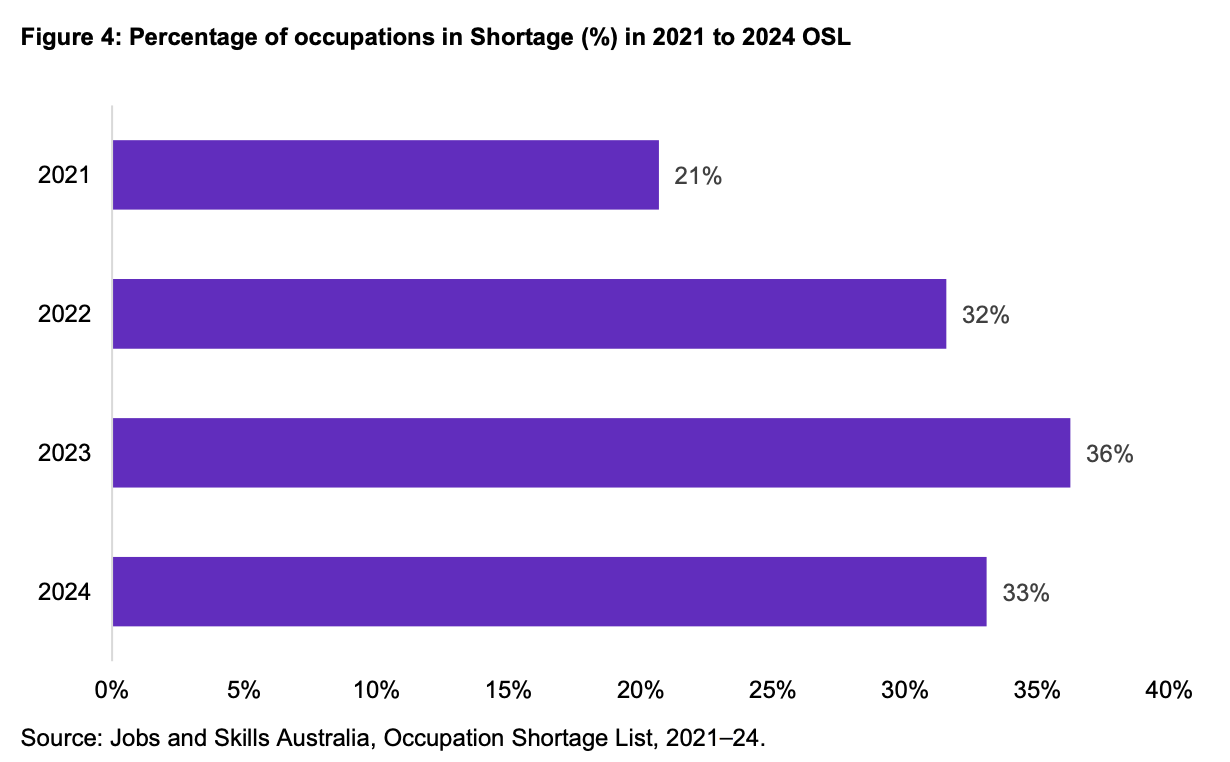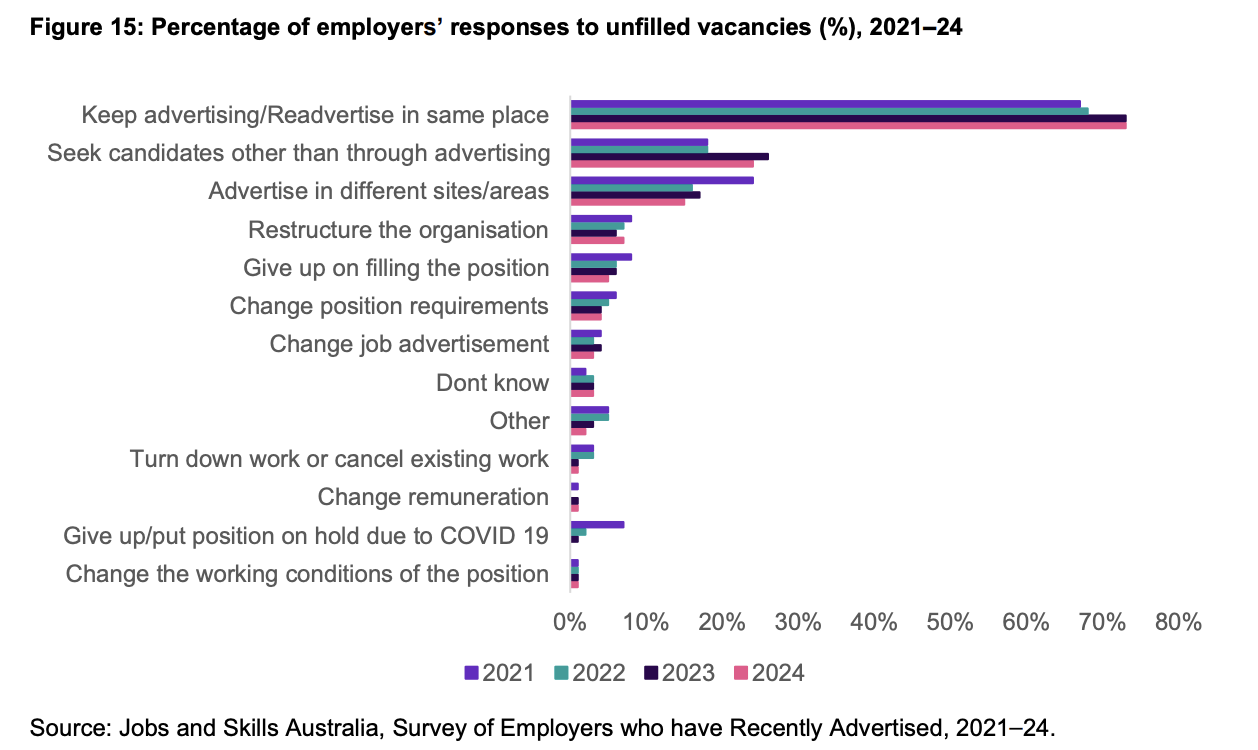
Which jobs are suffering from talent shortages?

One-third of occupations in Australia are struggling to find talent, according to the latest data from Jobs and Skills Australia (JSA).
The JSA's 2024 Occupation Shortage List revealed that 303 out of 916, or 33%, of occupations in Australia are in national shortage.
This is a decrease from the 36% recorded a year ago, according to the JSA, which noted that this is a sign of the overall labour market softening.
"This is an encouraging sign Australia is making some progress easing the skills shortages affecting many areas of the economy post-pandemic," said JSA Commissioner Barney Glover AO in a statement.
By occupation, the top 10 largest employing occupations in shortage include:
According to the JSA, gender-skewed occupations where men or women make up at least 80% of the workforce are "more likely to experience shortages."
"By contrast, more balanced workforces, those with at least 20% representation of both genders, tend to avoid shortages, suggesting that increasing diversity could alleviate labour market pressures," the JSA said.
The agency also noted that being age-inclusive could also help ease shortages, as only 19% of occupations were in shortage where at least 30% of their workforce had mature aged workers.
On the other hand, occupations that have a less than 10% workforce share of older workers reported the highest shortages with 44%.
Meanwhile, the 2024 Occupation Shortage List also found that only around one per cent of employers adjusted remuneration to fill vacancies.
Nearly three in four employers (73%) said they continued to advertise in the same space in response to unfilled vacancies, while 15% tried advertising on different sites or places.
